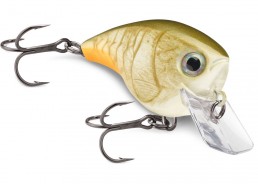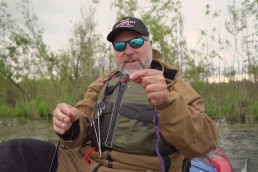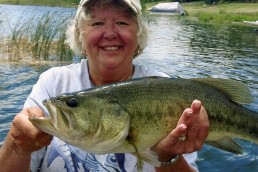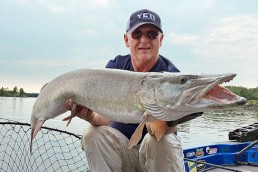SHARE THIS POST
The last few months this column covered nuances that can give us bank bassers more success catching our favorite quarry with artificial baits. We covered concepts involving color, vibration and sound, and the impact of baits contacting cover.
After receiving an interesting e-mail from a beginning bass angler, it became apparent that I had not addressed a critical factor in lure presentation. Sometimes we experienced anglers assume that all anglers we talk to understand the ideas or concepts we try to communicate. Advanced anglers, as in many other professions, use terms and jargon that often can be foreign to beginners.
Many of the practices that are second nature to those of us who have spent many hours fishing are less obvious to inexperienced anglers. We all were there once!
My purpose for writing is to help anglers become more successful, not to huddle around the wood stove and boast about fish catches gone by. That does little to educate those who want to broaden their bass fishing knowledge.
But back to the reader’s email. The question that spawned this article was what is the proper speed to move certain baits on your retrieve. Hmmm…well, that’s a pretty broad conversation, but I realized the answer dealt with bait speed—and also with bait cadence.
According to Merriam-Webster, cadence is: “The beat, time, or measure of rhythmical motion or activity.”
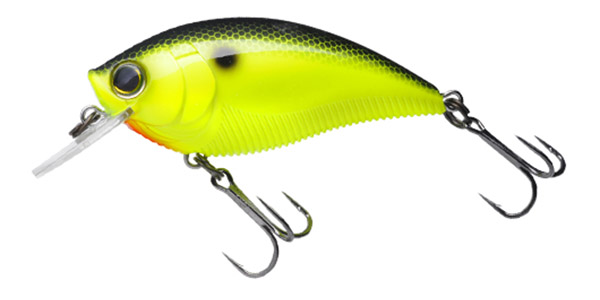
Cadence in fishing is the action you impart on an artificial lure beyond the action that the manufacturer designed into the bait. Speed of a bait is just part of the equation or an effective presentation.
Before this whole concept of cadence becomes clear as mud, let’s break it down to how we can use simple variances in our retrieves to increase our success on the water.
Cadence is more multidimensional than just speed alone. Cadence in lure presentation does not focus solely on lure speed. Cadence of a bait influences vibration and alters sound output. Cadence also affects the lure’s flash and changes a lure’s erratic movements from subtle to explosive. Cadence utilizes a bait’s full potential.
While effective cadence is simple to achieve, it takes a conscious effort on every cast to impart degrees of cadence. The cadence, this action and presentation you create, distinguishes your retrieve from that of other anglers. This self-induced variation in presentation now becomes specialized to you; it’s a trademark retrieve and lure action owned by you, the angler. This type of specialized lure movement and response can take you from being a decent angler with artificial lures to an absolute master.
The mechanics of cadence comes through the action you impart through your rod and reel. For a better illustration of cadence, let’s tie on a bait and make a few casts.
Certain baits offer more options than others do for varying retrieves. Take a squarebill crankbait, a favorite of mine to experiment with and infuse with a bit more energy. You can just cast a crankbait out, retrieve it back and still catch fish, but once again, we want that tweak that pushes us ahead of the crowd.
Are you enjoying this post?
You can be among the first to get the latest info on where to go, what to use and how to use it!
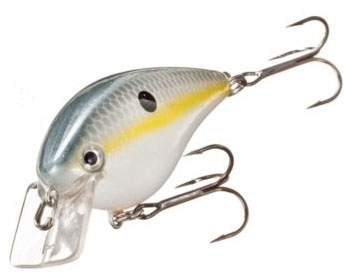
So cast that squarebill out. A typical squarebill runs in that 2- to 5-foot depth range (yes, baits and manufacturers vary). Get your bait down to your depth range. Give your rod a couple of quick snaps of the rod tip as the bait is moving, speeding up your bait. The increased speed varies the vibration and sound output. Now stop the bait, allowing it to slowly rise at rest, and then get back to cranking your bait back home.
Bring your bait a bit further and it hits wood on the bottom. You can pause and let the bait rise up above the wood or rip the bait against the wood causing it to bounce off erratically.
Past the wood you begin your retrieve again and this time you tangle with some sparse weeds. Let your squarebill contact the weeds and give it a quick rip, pulling through the weeds, kind of similar to that of a baitfish darting out of weed cover. Give the bait a few seconds hesitation, let it rise a bit, then reel your crankbait back to you.
Okay, that was a whole lot of activity for just one cast, but you get the idea of how you can vary your cadence in many ways with just one particular type of bait. I have very few baits that I take out of the box and just run a straight retrieve. Some get much more exaggerated movements than others, but always with some type of variance in the bait’s cadence. If I have a new bait and am uncertain of its action, I make a few casts to see what that out-of-the-box action looks like, then make my adjustments.
So you might be thinking, all this bait gymnastics seems like a lot of work. It does take a bit more concentration than just chucking your bait out and burning it back. But we’re looking for that extra edge to become advanced anglers. Watch some of the pro bass anglers work their baits. Each has its own signature retrieves, I guarantee.
Why do these erratic movements seem to increase success? Natural instinct. Bass, and other predator fish respond to this variation, this unnatural movement and the unusual behavior you give your bait. The cadence that you have now created appeals to the bass’s predatory instincts, convincing your fish that it has encountered a wounded, dying, or disoriented baitfish or some other type of food. This unusual pattern of your bait causes the fish’s natural predatory instincts to take over and the bass engulfs it
Many bass are caught, not due to hunger, but because of this reaction to kill. I have caught numbers of bass with baitfish or crayfish sticking out of their throats, bellies packed with bait, but still willing to hit a properly presented lure. It’s like after you’ve had your sixth slice of delicious pizza and are pretty much at your max, and then the dessert tray goes by and you stop for a quick look. Same thing with bass, sort of!
While I used a crankbait to demonstrate varying a retrieve, cadence needs to be implemented on most of the artificial baits you normally rely on for your bank bass fishing. Space won’t allow explaining various retrieves for all the popular bait choices, but for sure spinnerbaits, chatterbaits, surface lures and others are all prime for developing your own cadence.
So this season, use your imagination to customize your own bait presentations. Give your baits a distinct signature, one that separates you from the average basser. Raise your level of fishing success by instituting and mastering this change in your bait’s cadence.
If you have a question on a particular bait concerning cadence, please contact me and we can better focus on a retrieve and presentation to fit your needs. MWO
If you have any questions or comments you can reach Dan Brozowski at onthebank@att.net.
MWO
SHARE THIS POST
Did you enjoy this post?
You can be among the first to get the latest info on where to go, what to use and how to use it!
MWO
We believe being outdoors is good. With more than 1,000 articles each year, MidWest Outdoors magazine is all about sharing outdoor experiences with you—where to go, what to use and how to use it… whether you’re close to home or on that trip of a lifetime.
